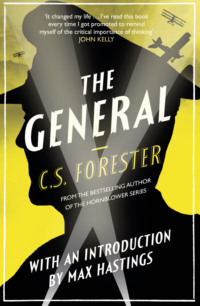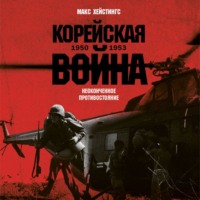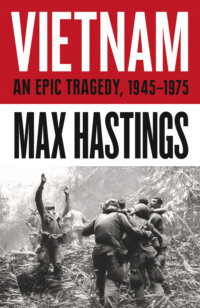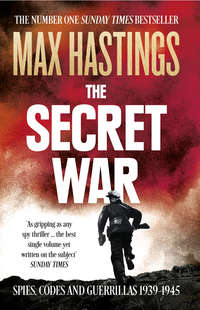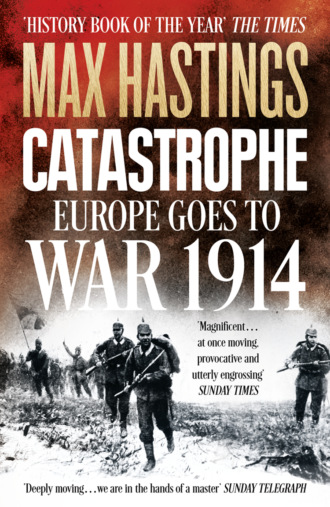
Полная версия
Catastrophe: Europe Goes to War 1914



Copyright
William Collins
A imprint of HarperCollinsPublishers
1 London Bridge Street
London SE1 9GF
www.harpercollins.co.uk
First published in Great Britain by William Collins in 2014
Copyright © Max Hastings 2013
Max Hastings asserts the moral right to be identified as the author of this work
A catalogue record for this book is available from the British Library
All rights reserved under International and Pan-American Copyright Conventions. By payment of the required fees, you have been granted the non-exclusive, non-transferable right to access and read the text of this e-book on-screen. No part of this text may be reproduced, transmitted, down-loaded, decompiled, reverse engineered, or stored in or introduced into any information storage and retrieval system, in any form or by any means, whether electronic or mechanical, now known or hereinafter invented, without the express written permission of HarperCollins.
Source ISBN: 9780007519743
Ebook Edition © 2014 ISBN: 9780007519750
Version: 2016-02-22
From the reviews of Catastrophe:
‘Hastings is a brilliant guide to that strange, febrile twilight before Europe plunged into darkness. Writing in pungent prose suffused with irony and underpinned by a strong sense of moral outrage, Catastrophe is a frontal assault on what Hastings calls the “poets’ view” of the First World War. Hastings is crisp, and definitive on the balance of guilt … Scholarly and fluent, relating with equal verve the attitudes and experiences of crowned heads and peasants … for anyone wanting to understand how that ghastly, much-misunderstood conflict came about, there could be no better place to start than this fine book’
BEN MACINTYRE, The Times
‘Magisterial’
Independent on Sunday, Books of the Year
‘Hastings is rightly regarded as Britain’s most accomplished military historian … Hugely entertaining’
DOMINIC SANDBROOK, Sunday Times, Books of the Year
‘Like one of Field Marshal Haig’s family whiskies, Max Hastings is a dram that steadily improves with age. His position as Britain’s leading military historian is now unassailable. In this enormously impressive new book, Hastings effortlessly masters the complex lead-up to and opening weeks of the First World War … [He] is as magisterial as we would expect … he soars across frontiers to take in every theatre, describing half-forgotten campaigns with the same verve and élan that he brings to more familiar clashes … Magnificent’
NIGEL JONES, Sunday Telegraph
‘Admirably scholarly yet reads as if the subject had never been written about before. No book is definitive, but this one will be hard to better’
PHILIP ZIEGLER, Spectator, Books of the Year
‘Hastings over the past two decades has become the premier contemporary historian of 20th-century war … The real strength of this story is how Hastings portrays the principal characters as very real human beings with as many flaws as virtues … Will the past be prologue? Get this book’
Washington Times
‘One could scarcely ask for a better guide to these horrors than Max Hastings … he is a superb writer with a rare gift for evoking the rhythm, mood and raw physical terror of battle. In this book he has not merely chronicled the evolving character of the European battlescapes, he has captured the contemporary shock of a new form of warfare … A first-class narrative’
Mail on Sunday
‘Excellent … What makes this book really stand out is Hastings’ deliberate efforts to puncture what he labels the many myths and legends of the events of 1914 … a highly readable account of a war that destroyed three dynasties, remade the map of Europe and set the state for mankind’s bloodiest century’
JERRY LENABURG, New York Journal of Books
‘A volume of great scope … he sweeps eagle-like over vast battlefields making the huge complexity of battle comprehensible with a pithy anecdote or a dismissive phrase … Vivid and informative’
Times Literary Supplement
‘Nothing short of a masterpiece … By bringing us the voices of the young men from all sides caught in the maws of these battles, we not only get a visceral sense of what it looked and sounded and smelled like, but an appreciation for the commonality of the horror befalling them. Wrenching and unforgettable’
SCOTT ANDERSON
‘A year ahead of the centenary of the Great War comes this howitzer of an offering from Max Hastings, who has skilfully blended new first-hand material from peasants and housewives to generals and emperors into a seamless, vivid and compelling narrative. His quest, he tells us, is to answer the question: “What happened to Europe in 1914?” He achieves this with aplomb, skilfully blending new first-hand material from all the major combatants – from peasants and housewives to generals and emperors – into a seamless, vivid and compelling pan-European narrative. Superbly detailed and nuanced … Hastings is a master of the pen portrait and the quirky fact … yet his greatness as a historian – never shown to better effect than in this excellent book – lies in his willingness to challenge entrenched opinion’
SAUL DAVID, Evening Standard
‘Told with an equal richness of detail and sure narrative sweep’
DAVID CRANE, Spectator
‘Magnificent … [this] book will take a lot of beating … Hastings writes with an enviable grasp of pace and balance, as well as an acute eye for human detail. Even for readers who care nothing for the difference between a battalion and a division, his book is at once moving, provocative and utterly engrossing’
Sunday Times
‘Very readable … his account of the fighting on the Eastern front draws on powerful and unfamiliar material … Sir Max has retold it as well as any of his predecessors’
Observer
‘Vigorous and readable, making good use of the worm’s eye-view in diaries and letters home … splendidly well written – fluent, engaging, well paced and, despite the grim subject matter, often entertaining’
RICHARD OVERY, New Statesman
‘Hastings argues persuasively that the war’s opening phase had a unique character that merits closer study … Deft narrative and analysis’
Wall Street Journal
‘Hastings has produced a punchy, entertaining book that is strong on the failings of each nation’s military leaders in 1914 … Chapters paint vivid accounts of the horror and tedium that confronted ordinary soldiers’
Financial Times
‘The political and chattering classes are right to be worried: if any region today could cause a crisis comparable to that of 1914, it is the Middle East. They need a new book on the outbreak of World War I, and now they have it in Catastrophe. [Hastings is] an outstanding historian … a victorious foray’
HEW STRACHAN, New York Times
‘A magisterial, sweeping narrative … blisteringly caustic about the failures of Britain’s ossified high command … Reading Hastings, you often get the feeling that he should have been there at the crucial staff conferences. Catastrophe is yet another achievement to add to his previous triumphs’
Literary Review
‘A typically thrilling combination of verve and scholarship. He paints on the broadest possible canvas while retaining an eagle eye for the illuminating life, the singular experience, the remark that brings alive the stupidity, the courage and, above all, the confusion’
The Times
‘Hastings does an excellent job of assembling a chronicle of the war’s first few months … and skilfully marshals evidence assembled by several generations of scholars into a highly readable narrative that should be the last word on the subject’
New York Times Book Review
‘Immensely readable epic history’
PATRICIA NICHOL, Metro, Books of the Year
‘Max Hastings easily saw off his rivals in the battle for the First World War centenary market … old-fashioned military history, shamefully readable’
Observer, Books of the Year
‘Does the world need another book on that dismal year? Absolutely, if it’s by Hastings … Readers accustomed to Hastings’ vivid battle descriptions, incisive anecdotes from all participants, and shrewd, often unsettling opinions will not be disappointed. Among the plethora of brilliant accounts of this period, this is one of the best’
Kirkus
‘Authoritative and immensely readable’
Prospect
‘If you’re going to read only one history of World War I, the chances are this is going to be it. Hastings is blistering about the incompetence of the commanders-in-chief on all sides. However it’s Hastings’ depiction of the cost of the war on the soldiers and their families that really gives Catastrophe its power’
JOHN PRESTON, Daily Mail, Books of the Year
‘This excellent chronicle of World War I’s first months dispels some popular myths’
New York Times
‘Writing with marvelous cogency and trenchancy … a valuable contribution’
PIERS BRENDON, Independent
‘Invites consideration as the best in his distinguished career, combining a perceptive analysis of the Great War’s beginnings with a vivid account of the period from August to September of the titular year’
Publishers Weekly
‘Admirable in its scope and vividly told’
Independent on Sunday
‘Truly a masterpiece. What [Hastings] does, in the same absorbing style that we enjoyed in All Hell Let Loose, is to explain how the Great Powers got into it, and he does so with commendable clarity … The extent of his research is truly impressive … a book that is as enjoyable to read as it is important historically’
Country Life
Dedication
For
PENNY
who does the real work
Contents
Cover
Title Page
Copyright
Praise
Dedication
List of Illustrations
List of Maps
Introduction
1914 Chronology
The Organisation of Armies in 1914
Prologue: SARAJEVO
1. ‘A Feeling that Events are in the Air’
1. CHANGE AND DECAY
2. BATTLE PLANS
2. The Descent to War
1. THE AUSTRIANS THREATEN
2. THE RUSSIANS REACT
3. THE GERMANS MARCH
4. THE BRITISH DECIDE
3. ‘The Superb Spectacle of the World Bursting Into Flames’
1. MIGRATIONS
2. PASSIONS
3. DEPARTURES
4. Disaster on the Drina
5. Death with Flags and Trumpets
1. THE EXECUTION OF PLAN XVII
2. ‘GERMAN BEASTLINESS’
3. LANREZAC ENCOUNTERS SCHLIEFFEN
6. The British Fight
1. MONS
2. LE CATEAU: ‘WHERE THE FUN COMES IN, I DON’T KNOW’
7. The Retreat
8. Tannenberg: ‘Alas, How Many Thousands Lie There Bleeding!’
9. The Hour of Joffre
1. PARIS AT BAY
2. SIR JOHN DESPAIRS
3. SEEDS OF HOPE
10. The Nemesis of Moltke
1. THE MARNE
2. ‘STALEMATE IN OUR FAVOUR’
11. ‘Poor Devils, They Fought Their Ships Like Men’
12. Three Armies in Poland
13. ‘Did You Ever Dance With Him?
1. HOME FRONTS
2. NEWS AND ABUSE
14. Open Country, Open Sky
1. CHURCHILL’S ADVENTURE
2. ‘INVENTIONS OF THE DEVIL’
15. Ypres: ‘Something that was Completely Hopeless’
16. ‘War Becomes the Scourge of Mankind’
1. POLAND
2. THE SERBS’ LAST TRIUMPH
17. Mudlife
18. Silent Night, Holy Night
Picture Section
Keep Reading
Footnotes
Notes and References
Bibliography
Index
Acknowledgements
About the Author
By the Same Author
About the Publisher
Illustrations
Author’s note: Images of the campaigns of 1914 are rare. Those professing to portray combat are often posed or faked, and many contemporary captions are wilfully or accidentally inaccurate. The pictures in this book have been chosen with these realities in mind, to give the most vivid possible impression of what the battlefields looked like, while recognising that few can be appropriately placed and dated, and some predate the war.
Kaiser Wilhelm II (Popperfoto/Getty Images)
Poincaré and the Tsar, St Petersburg, July 1914 (© Interfoto/Alamy)
Asquith and Lloyd George (Private collection)
Pasic (Imagno/Getty Images); Berchtold (akg/Imagno); Sazonov (© RA/Lebrecht Music & Arts); Grey (Hulton Archive/Getty Images); Churchill (Hulton Archive/Getty Images); Bethmann Hollweg (DPA/Press Association Images)
Russians solicit divine assistance (Mirrorpix)
Moltke (The Granger Collection/Topfoto); Ludendorff (Hulton Archive/Getty Images); Hindenburg (Hulton Archive/Getty Images); Kitchener (Hulton Archive/Getty Images); Lanrezac (Mary Evans/Epic/Tallandier)
Conrad (© Ullsteinbild/Topfoto); Joffre (© Roger Viollet/Topfoto); French (© Roger Viollet/Topfoto); Haig (© Roger Viollet/Topfoto); Falkenhayn (Hulton Archive/Getty Images); Franchet d’Espèrey (DeAgostini/Getty Images)
Russians in Galicia (Mirrorpix)
Serbian troops advance (© Robert Hunt Library/Mary Evans)
Putnik (© The Art Archive/Alamy)
Potiorek (Getty Images)
Corporal Egon Kisch (© IMAGNO/Lebrecht)
Austrian troops conduct a mass execution of Serbian civilians (© Robert Hunt Library/Mary Evans)
An Austrian siege piece (Photo12/Ann Ronan Picture Library)
Kluck (akg-images)
Bülow (© INTERFOTO/Alamy)
French troops, before the deluge (© Roger-Viollet/Topfoto)
Belgians in action (Underwood Archives/Getty Images)
The legendary French soixante-quinzes (Roger-Viollet/Rex Features)
Smith-Dorrien (Mirropix)
Wilson, Foch and Huguet (Hulton Archive/Getty Images)
Murray (Universal History Archive/UIG/The Bridgeman Art Library)
Germans advance (RA/Lebrecht Music & Arts)
Frenchmen display offensive spirit (Mirrorpix)
Austro-Hungarian cavalry in Galicia (© Robert Hunt Library/Mary Evans)
The British deploy on their first battlefield (© IWM (Q 53319))
British troops await the enemy
Samsonov (DeAgostini/GettyImages)
Russians under attack
Russian prisoners after Tannenberg (© Robert Hunt Library/Mary Evans)
Rennenkampf (RIA Novosti)
Fortunino Matania’s painting of L Battery’s action at Néry (© David Cohen Fine Art/Mary Evans Picture Library)
The Middlesex under fire (R.C. Money. LC GS 1126. Reproduced with the permission of Leeds University Library)
A Suffolk girl at the handle of a Lowestoft tram (© IWM (Q 31032)
Russian soldiers in bivouac (David King Collection)
A Russian field hospital (David King Collection)
The Western Front, winter 1914 (© SZ Photo/Scherl/The Bridgeman Art Library)
Dorothie Feilding (Warwickshire County Record Office collections: CR2017/F246/326); Edouard Cœurdevey (Personal archives of Jean Cœurdevey); Jacques Rivière (All rights reserved. Private collection); Richard Hentsch (bpk/Studio Niermann/Emil Bieber); Paul Lintier (From Avec une batterie de 75. Le Tube 1233. Souvenirs d’un chef de pièce (1915–1916) by Paul Lintier, Paris 1917); Vladimir Littauer (From Russian Hussar by Vladimir S. Littauer, J.A. Allen & Co., London, 1965); Constantin Schneider (Constantin Schneider als Oberleutnant; Foto: Privatbesitz; Reproduktion: Salzburger Landesarchiv; aus: Veröffentlichungen der Kommission für Neuere Geschichte Österreichs, Bd. 95, Wien [u.a.] Böhlau, 2003); Lionel Tennyson (Tennyson Research Centre, Lincolnshire County Council); Venetia Stanley (© Illustrated London News Ltd/Mary Evans); Louis Spears (Patrick Aylmer); Helene Schweida and Wilhelm Kaisen (State Archive of Bremen); Louis Barthas (From Les Carnets de guerre de Louis Barthas, tonnelier, 1914–1918 © Editions de la Découverte. Paris. English edition to be published in 2013 by Yale University Press); François Mayer (© IWM Q 111149)
A family flees a battlefield (Mirrorpix)
British soldiers in Belgium, winter 1914 (K.W. Brewster/The Liddle Collection/Leeds University Library. Photograph LC GS 0195)
While every effort has been made to trace the copyright holders of photographs, in some cases this has not proved possible. The author and publishers would welcome any information that would enable such omissions to be rectified in future editions.
Maps
Author’s note: The movements of the vast armies in 1914 were so complex that it is almost impossible to depict them cartographically in detail. In these maps I have striven for clarity for non-specialist readers, for instance by omitting divisional numbers except where essential. They are generally based upon the maps in Arthur Banks’s A Military Atlas of the First World War (Heinemann, 1975).
Rival concentrations on the Western Front, August 1914
Serbia, 1914
Frontier battles in Lorraine, 10–28 August 1914
The German advance through Belgium, August 1914
The Battle of Mons, 23 August 1914
The British at Le Cateau, 26 August 1914
The allied retirement, 23 August–6 September 1914
A View of the Eastern Front
The Russian advance into East Prussia
The Battle of Tannenberg, 24–29 August 1914: the pre-battle situation
The Battle of Tannenberg: the final act
German advance, 17 August–5 September 1914
The Battle of the Marne, 5–6 September 1914
The Battle of the Marne, 7–8 September 1914
The Battle of the Marne, 9 September 1914
The German armies in retreat towards the Aisne
The Galician theatre
The allied withdrawal to the Yser–Lys position, 9–15 October 1914
The First Battle of Ypres: the first moves
The First Battle of Ypres: final positions
Approximate positions on the Eastern and Western Fronts, December 1914
As commandant of the British Army’s staff college in 1910, Brigadier-General Henry Wilson asserted the likelihood of a European war, and argued that Britain’s only prudent option was to ally itself with France against the Germans. A student ventured to argue, saying that only ‘inconceivable stupidity on the part of statesmen’ could precipitate a general conflagration. This provoked Wilson’s derision: ‘Haw! Haw! Haw!!! Inconceivable stupidity is just what you’re going to get.’
‘We are readying ourselves to enter a long tunnel full of blood and darkness’ ANDRÉ GIDE, 28 July 1914
A bantering Russian foreign ministry official said to the British military attaché on 16 August: ‘You soldiers ought to be very pleased that we have arranged such a nice war for you.’ The officer answered: ‘We must wait and see whether it will be such a nice war after all.’
Introduction
Winston Churchill wrote afterwards: ‘No part of the Great War compares in interest with its opening. The measured, silent drawing together of gigantic forces, the uncertainty of their movements and positions, the number of unknown and unknowable facts made the first collision a drama never surpassed. Nor was there any other period in the War when the general battle was waged on so great a scale, when the slaughter was so swift or the stakes so high. Moreover, in the beginning our faculties of wonder, horror and excitement had not been cauterized and deadened by the furnace fires of years.’ All this was so, though few of Churchill’s fellow participants in those vast events embraced them with such eager appetite.
In our own twenty-first century, the popular vision of the war is dominated by images of trenches, mud, wire and poets. It is widely supposed that the first day of the 1916 Battle of the Somme was the bloodiest of the entire conflict. This is not so. In August 1914 the French army, advancing under brilliant sunshine across a virgin pastoral landscape, in dense masses clad in blue overcoats and red trousers, led by officers riding chargers, with colours flying and bands playing, fought battles utterly unlike those that came later, and at even more terrible daily cost. Though French losses are disputed, the best estimates suggest that they suffered well over a million casualtiesfn1 in 1914’s five months of war, including 329,000 dead. One soldier whose company entered its first battle with eighty-two men had just three left alive and unwounded by the end of August.
The Germans suffered 800,000 casualties in the same period, including three times as many dead as during the entire Franco-Prussian War. This also represented a higher rate of loss than at any later period of the war. The British in August fought two actions, at Mons and Le Cateau, which entered their national legend. In October their small force was plunged into the three-week nightmare of the First Battle of Ypres. The line was narrowly held, with a larger French and Belgian contribution than chauvinists acknowledge, but much of the old British Army reposes forever in the region’s cemeteries: four times as many soldiers of the King perished in 1914 as during the three years of the Boer War. Meanwhile in the East, within weeks of abandoning their harvest fields, shops and lathes, newly mobilised Russian, Austrian and German soldiers met in huge clashes; tiny Serbia inflicted a succession of defeats on the Austrians which left the Hapsburg Empire reeling, having by Christmas suffered 1.27 million casualties at Serb and Russian hands, amounting to one in three of its soldiers mobilised.
Many books about 1914 confine themselves either to describing the political and diplomatic maelstrom from which the armies flooded forth in August, or to providing a military narrative. I have attempted to draw together these strands, to offer readers some answers, at least, to the enormous question: ‘What happened to Europe in 1914?’ Early chapters describe how the war began. Thereafter, I have traced what followed on the battlefields and behind them until, as winter closed in, the struggle lapsed into stalemate, and attained the military character that it retained, in large measure, until the last phase in 1918. Christmas 1914 is an arbitrary point of closure, but I would cite Winston Churchill’s remarks above, arguing that the opening phase of the conflict had a unique character which justifies examining it in isolation. My concluding chapter offers some wider reflections.


